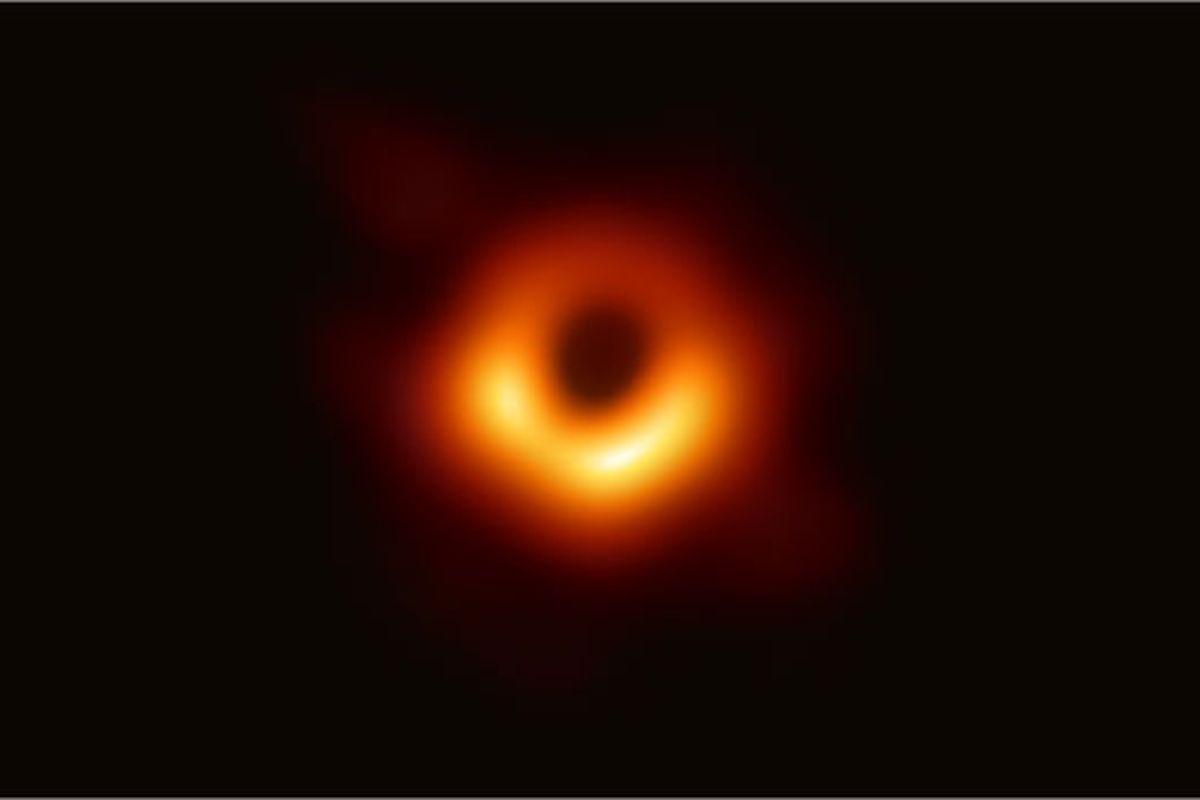Do you know what a black hole looks like? Turns out it is exactly what everyone thought. Every major telescope in the world was used at the same time to capture a picture of a black hole bigger than our entire solar system. It is very difficult to get a photo of a black hole because it is a gravitational abyss so deep and dark that no light can escape from it.
Shep Doeleman, an astronomer at the Harvard-Smithsonian Center for Astrophysics, and director of the attempt to take the picture said during a conference in Washington, D.C., “We have seen what we thought was unseeable.”
Astronomers had to reach intergalactic space to Messier 87, a giant galaxy in the constellation Virgo, to take this picture. In that location there is a black hole several billion times more massive than our sun, releasing a violent jet of energy about 5,000 light-years into space.
The picture looks like an uneven ring of light surrounding a dark circle deep in the galaxy about 55 million light-years away from Earth.The image is a result of two years worth of computer analysis of observations from a network of radio antennas, called the Event Horizon Telescope. A total of eight radio observatories on six mountains and four continents were needed to capture the image.
On and off for 10 days in April 2017, those eight telescopes captured dim sources of radio noise, called Sagittarius A, which let astronomers know that there was a black hole specifically located in the Virgo constellation.
Albert Einstein theorized that matter, space, and time come to an end and vanish like a dream when the cumulative force of gravity becomes too much for a single place. The new image of the black hole proves Einstein’s theory and Einstein’s belief that the shape of the shadow created would be a circle.
The telescope network continues to increase. In April 2018, a telescope in Greenland was added to the collaboration in an effort to capture more images of black holes. Two more antennas are waiting to join the Event Horizon Telescope network which captured the first image of the black hole.
“The plan is to carry out these observations indefinitely and see how things change,” said Dr. Doeleman. “It’s astonishing to think humans can turn the Earth into a telescope and see a black hole,” and still more amazing to do it with this team, he said. “That’s the best.”
Astronomers will continue to expand their understanding of the black hole through observation, team work, and the addition of more telescopes around the world.
It was the joint collaboration of teams with data from multiple telescopes around the world that was able to help produce the image. That same collaboration that will help gather more observational data about black holes in the coming years.



